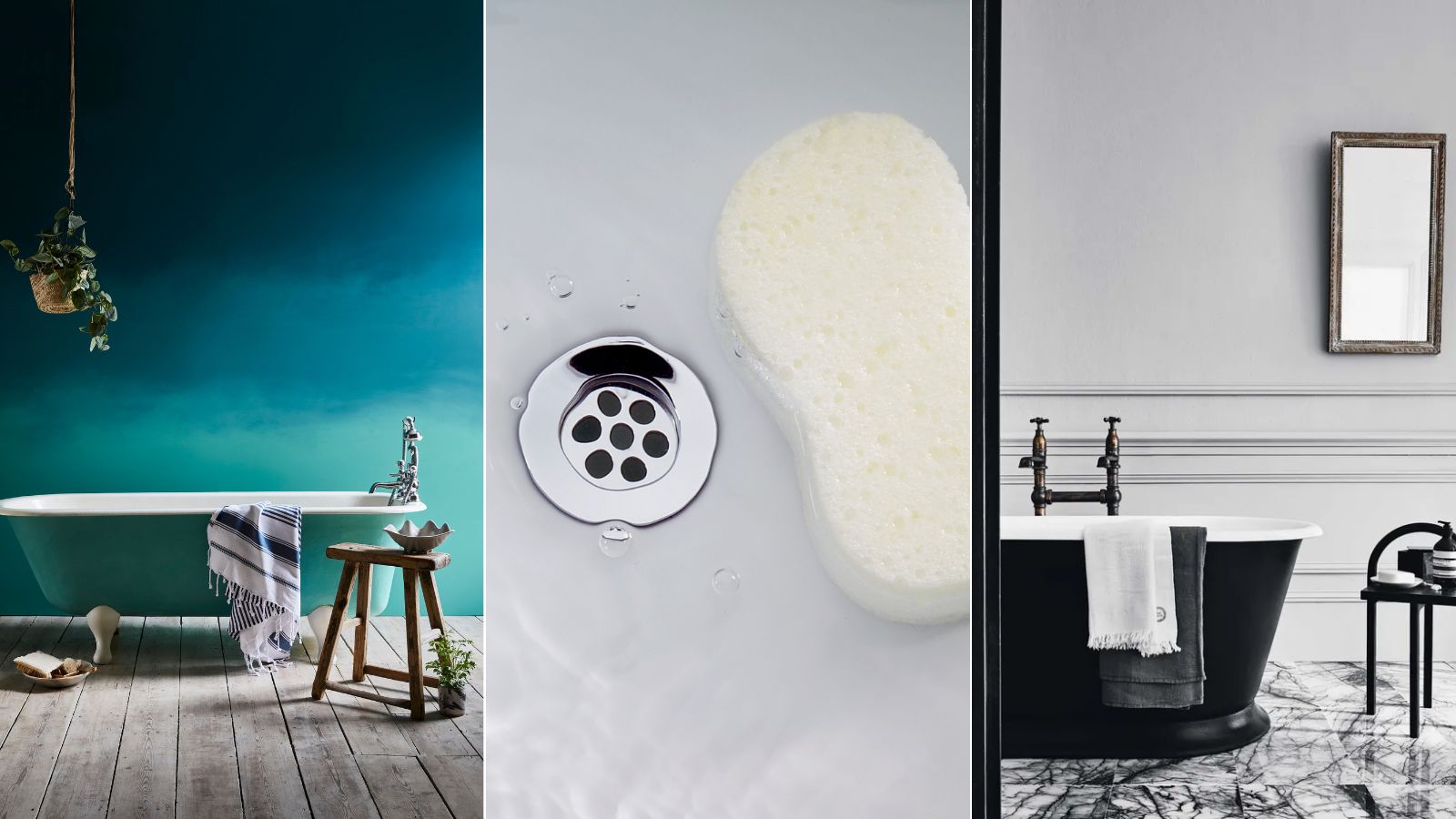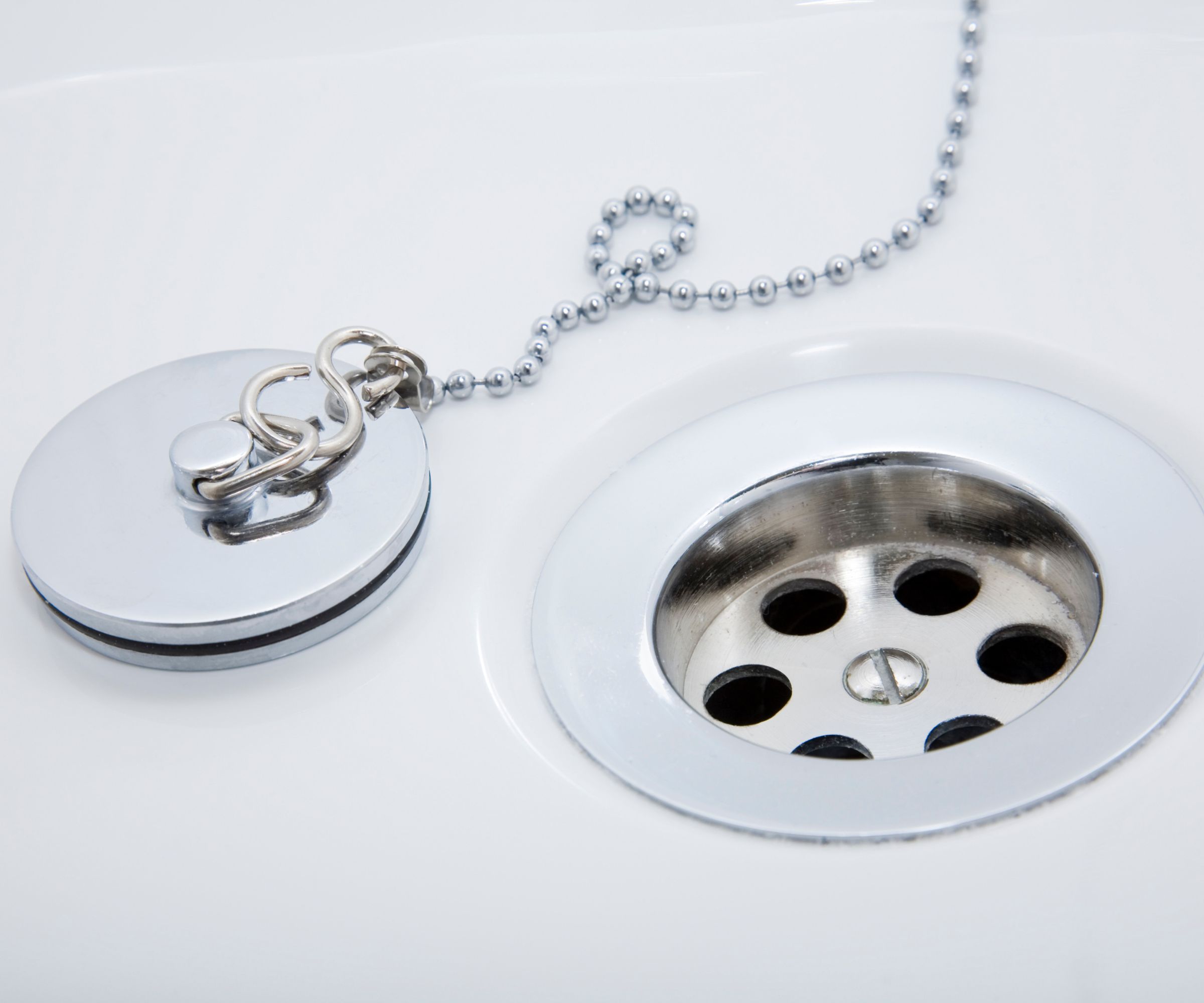
Over time, hair, soap residue, and grime can build up in the bathtub drain, leading to clogs and unpleasant odors. A clean drain, on the other hand, ensures smooth drainage, maintains hygiene, and prevents more extensive maintenance issues from arising.
Taking the time to clean your drain is a key step in cleaning a bathtub. However, despite being one of the dirtiest places in a bathroom, a drain is a place in your bathroom you might be forgetting to clean regularly.
To fix slow-draining issues, prevent clogs from accumulating, and ensure a fresher-smelling bathroom, our experts recommend incorporating these techniques into your cleaning routine for a sparkling clean drain.
How to clean bathtub drain
'Maintaining a clean bathtub drain is essential for preventing water backup and more serious plumbing issues down the line,' explains plumbing technician and owner of Plumbing Lab, Josh Mitchell. 'Regular cleaning not only keeps your plumbing system healthy but also saves you from potentially costly professional cleanings or repairs.'
Below, are eight cleaning tips to create a more functional and pleasant bathroom environment.
1. Remove the stopper or strainer

'Most bathtub drains have either a stopper or a strainer that needs to be removed before cleaning,' says Josh Mitchell. 'Stoppers can usually be pulled out or unscrewed by hand or with the help of pliers.
'For strainers, you might need a screwdriver to remove the screws holding it in place. Stubborn stoppers or strainers can be a hassle to unscrew or remove. In my experience, a bit of lubricant or penetrating oil can work wonders in loosening them up.'
Once this is removed, you can more easily inspect for any potential clogs and begin cleaning.
2. Clear out visible debris
Once the stopper or strainer is removed, grab a flashlight and take a peek down the drain. Look for any visible clumps or blockages.
'Start by removing visible debris such as hair, soap scum, and other particles that may be obstructing the drain. You can use a pair of gloves and a small tool like a pair of needle-nose pliers or a bent wire hanger to fish out any trapped material,' says Mehdi Khachani, CEO of JMK Plumbing.
For this task, we recommend wearing a pair of gloves, like these Playtex reusable cleaning gloves, from Walmart.
3. Flush the drain with boiling water

Once surface-level blockages have been removed, you can use boiling water to help dislodge and clear any further, minor blockages.
Carefully pour a kettle or pan of boiling water down the drain to break down and flush away accumulated soap, grease, and other residues.
4. Rinse the drain with cleaner
'Next, create a natural and chemical-free drain cleaner by combining half a cup of baking soda with half a cup of vinegar. Pour this mixture down the drain and let it sit for 15-20 minutes,' advises Mehdi Khachani.
'If this does not clean your drain to a satisfactory level, you may consider using a commercial chemical drain cleaner. However, use these products with caution and follow the manufacturer's instructions to avoid any potential damage to your plumbing system.'
While vinegar, baking soda, and other homemade cleaners are safe for the pipes, you shouldn't use vinegar and baking soda to unclog a drain, because these ingredients are not powerful enough to to unclog a bathtub. Instead, this mixture is the perfect way to routinely remove grease and debris to prevent this from building up over time.
What's more, while commercial drain cleaners are effective at removing blockages, they can contain harsh chemicals that can weaken plastic pipes and corrode metal ones.
5. Do a second hot water flush

After letting the baking soda and vinegar mixture work its magic, flush the drain again with boiling water. This final rinse helps flush away any loosened debris and residual baking soda and vinegar. This step will often resolve slow-draining issues as well.
6. Scrub the drain
Using a soft brush or old toothbrush, scrub away any remaining dirt on or around the drain. Be especially vigilant about cleaning around the sides of the drain.
To help loosen debris during cleaning, you can use some detergent, or create a mildly abrasive paste using a mixture of baking soda and water.
7. Add essential oils

Much like the secret to having a nice-smelling shower drain, you can add essential oils to your bathtub drain to ensure it emits a pleasant scent.
Choose one or a few essential oils that have antimicrobial properties to help keep your drain fresh. We recommend the oils in this Pure Aroma kit, from Amazon.
You can mix a few drops of essential oils (such as tea tree oil, lemon, lavender, or eucalyptus) with water to pour down the drain. Let this sit for a few minutes before rinsing the drain with hot water.
8. Clean the drain stopper

Finally, clean any debris off the drain stopper using a brush and some detergent to scrub any crevices. If heavily soiled or caked in stubborn grime or watermarks, soak in a soapy solution overnight and then rinse well. This should do the trick with minimal effort.
To prevent future clogs, consider using a hair catcher or drain strainer, such as this one from Amazon, to trap hair and debris before they enter your bathtub drain. This should save you a lot of time and stress when cleaning your drain and minimize the risk of clogs developing.







